Gastronomy and Cuisine
Lanzarote, the jewel of the Canary Islands, is not just known for its stunning volcanic landscapes and crystal-clear waters, but also for its unique and diverse culinary scene. The island’s gastronomy is a fusion of traditional Canarian recipes, fresh local ingredients, and a variety of influences that have shaped its culture over centuries. From the rich flavours of the Atlantic Ocean to the fertile volcanic soil that nurtures an array of local produce, Lanzarote’s cuisine is a delightful experience for food lovers. Here’s an in-depth look at what makes Lanzarote’s gastronomy so special.
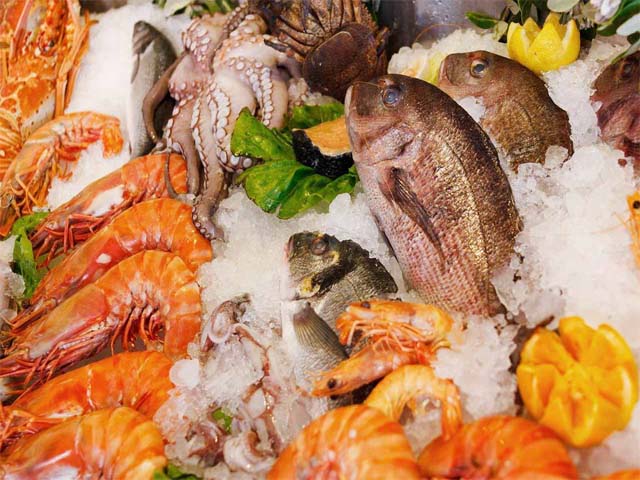
1. Fresh Seafood Delights
Surrounded by the Atlantic Ocean, Lanzarote boasts an abundant supply of fresh seafood, which is at the heart of its cuisine. Local fishermen bring in daily catches of fish like vieja (parrotfish), mero (grouper), and sama (dentex), all of which are served grilled, fried, or prepared in traditional dishes. Octopus, squid, and prawns are also popular, often served with a drizzle of local olive oil, garlic, and lemon, or as part of a paella or caldo de pescado (fish stew).
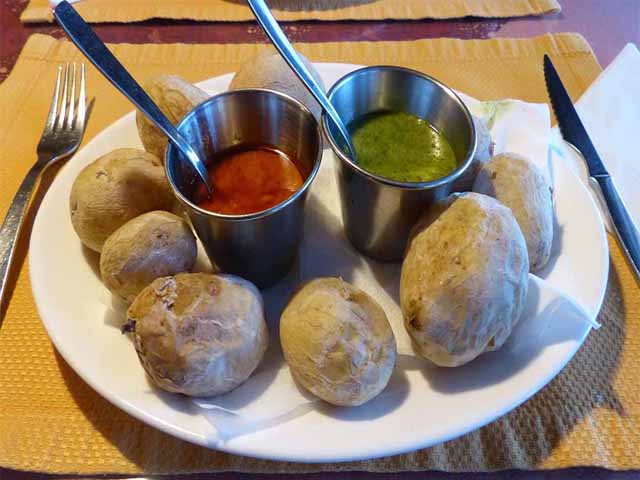
2. Papas Arrugadas and Mojo
The Canary Islands’ Signature Dish. No discussion about Lanzarote’s cuisine would be complete without mentioning papas arrugadas, or “wrinkled potatoes.” These small, locally grown potatoes are boiled in sea-salted water until their skins become wrinkled, then served with two types of mojo sauce: mojo rojo (red pepper sauce) and mojo verde (green coriander sauce). The sauces, made with olive oil, vinegar, garlic, and either peppers or coriander, add a vibrant and tangy flavor, making this simple dish a staple on every table.
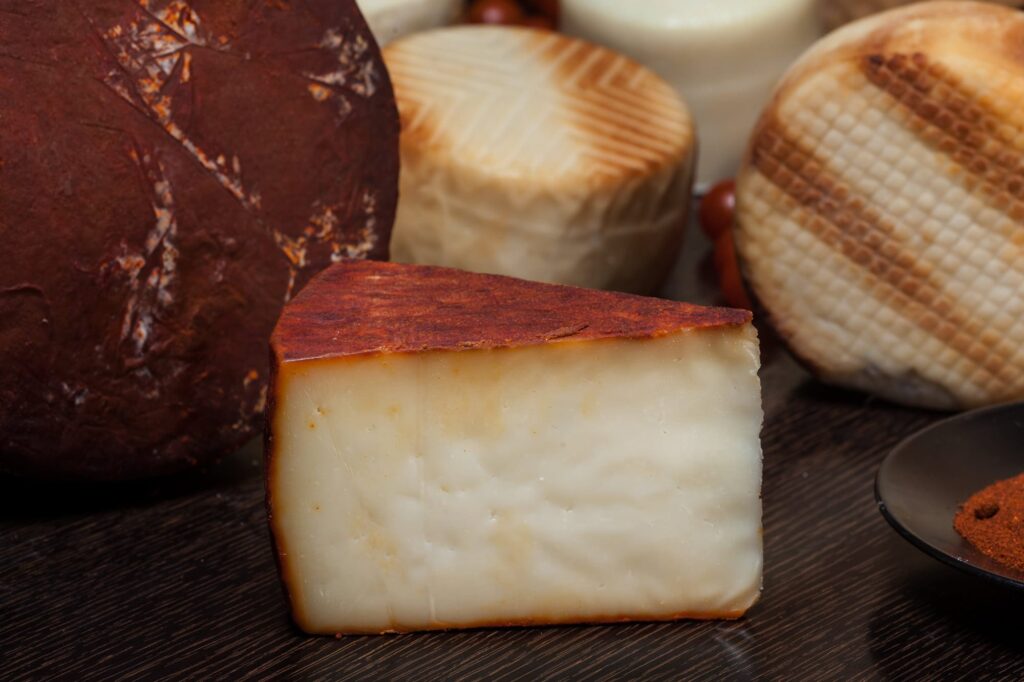
3. Goat Cheese and Dairy Specialties
Lanzarote is renowned for its high-quality goat cheese, or queso de cabra. Produced from locally raised goats, this cheese comes in various forms, from fresh and creamy to aged and hard, often smoked with the aroma of local firewood. The Queso de Cabra Majorero and Queso Palmero are some of the most famous varieties, known for their unique texture and flavour that reflect the island’s volcanic environment. Many dishes feature this cheese, whether as part of a cheese platter or incorporated into recipes, such as salads and baked dishes.
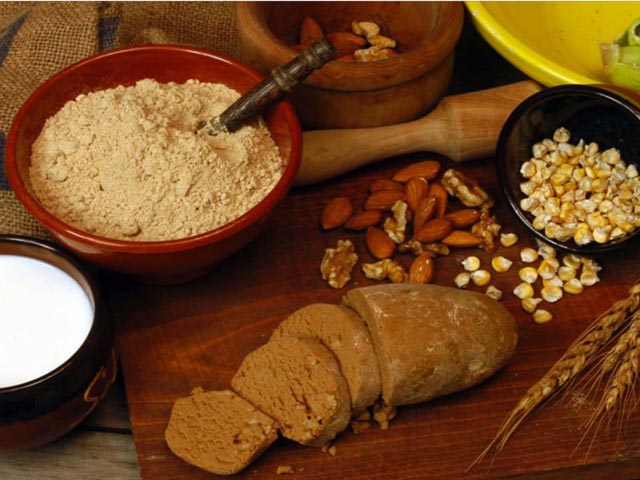
4. Traditional Gofio: A Nutritious Island Staple
Gofio is a type of flour made from roasted grains, such as wheat or corn, and is a staple of Canarian cuisine. Rich in nutrients and flavour, gofio is versatile and can be found in a range of dishes, from soups and stews to desserts. It is often used to thicken soups, add texture to stews, or even made into a sweet paste mixed with honey and almonds. The tradition of consuming gofio dates back to the indigenous Guanche people, making it an essential part of Lanzarote’s culinary heritage.

5. Carnes: Locally Sourced Meats
While seafood takes center stage, Lanzarote also offers a variety of meats, especially goat and rabbit, which are used in many traditional recipes. Conejo en Salmorejo (rabbit marinated in a spicy sauce) is a must-try for those seeking an authentic taste of the island. Other popular dishes include cabrito asado (roast goat) and carne de cochino negro (black pork), a local breed known for its tender and flavourful meat.
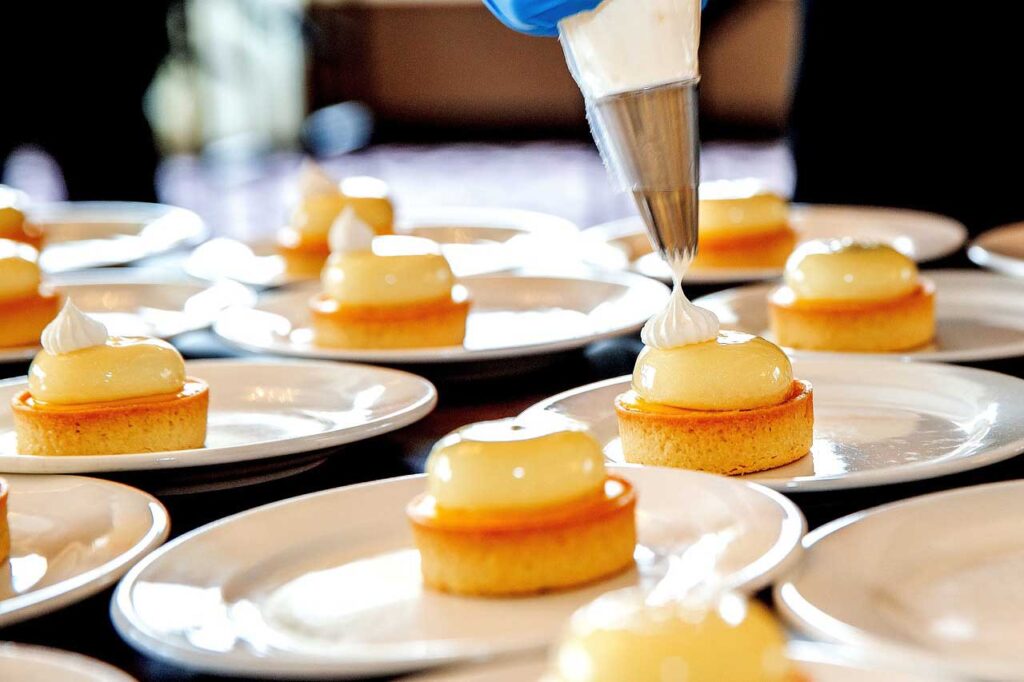
6. Sweet Treats and Desserts
Lanzarote’s desserts are as rich and diverse as its savory offerings. The island’s volcanic soil and unique climate contribute to the production of miel de palma (palm honey) and locally grown almonds, which are often used in desserts. Traditional sweets like bienmesabe (a mixture of honey, almonds, and eggs), frangollo (a pudding made from cornmeal, sugar, and milk), and quesadillas (cheese pastries) are beloved by locals and visitors alike. These sweet treats provide a delightful finish to any meal, showcasing the island’s sweet side.

7. Local Wines: The Vineyards of La Geria
Lanzarote’s volcanic terrain and unique climate create ideal conditions for wine production, especially in the region of La Geria. The island is famous for its Malvasía wines, which range from dry to sweet and are characterized by their distinct flavor, a result of the volcanic soil and Atlantic breezes. The vines are grown in deep pits dug into the black volcanic ash, which protects them from the wind and conserves moisture. A visit to one of Lanzarote’s many wineries offers a chance to taste these exceptional wines, which pair perfectly with the local cuisine.
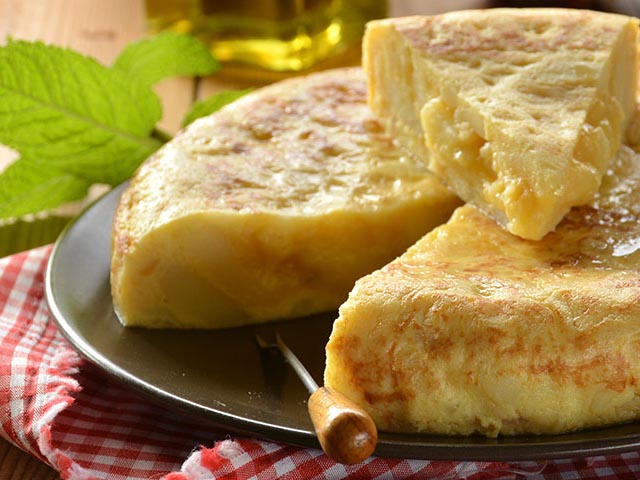
8. Sustainable and Farm-to-Table Practices
Lanzarote is committed to sustainability, and its cuisine reflects this ethos. Many local restaurants and markets prioritize farm-to-table practices, sourcing ingredients from local farmers and fishermen. This emphasis on fresh, seasonal, and locally produced food ensures that dishes are not only delicious but also environmentally friendly. Visitors can enjoy meals that showcase the best of what the island has to offer while supporting sustainable tourism.

9. A Fusion of Cultures and Flavours
Lanzarote’s cuisine is a melting pot of influences, including Spanish, African, and Latin American flavors. This fusion is evident in dishes like ropa vieja (a shredded meat stew with chickpeas and vegetables) and potaje de berros (watercress soup), which combine local ingredients with spices and techniques brought by settlers and traders over centuries. This cultural blend adds depth and diversity to Lanzarote’s gastronomy, making it a unique destination for food enthusiasts.
Conclusion
Lanzarote’s gastronomy is a reflection of its rich history, diverse culture, and unique environment. From fresh seafood and locally sourced meats to traditional dishes and innovative modern cuisine, the island offers a culinary journey like no other. Whether you’re savoring a simple dish of papas arrugadas with mojo sauce, enjoying a glass of Malvasía wine in a volcanic vineyard, or indulging in a sweet almond dessert, every bite tells the story of Lanzarote. Discover the flavors of this extraordinary island and experience the essence of its cuisine.
The information contained above is accurate at the time of uploading should ammendments need to take place, then this will be carried out on the next upload.
Photo Gallery: Lanzarote-UK
